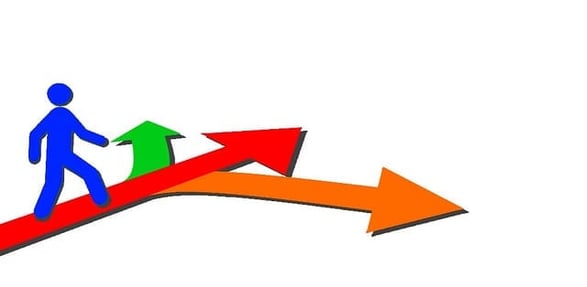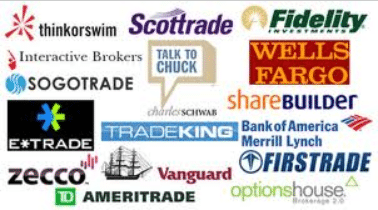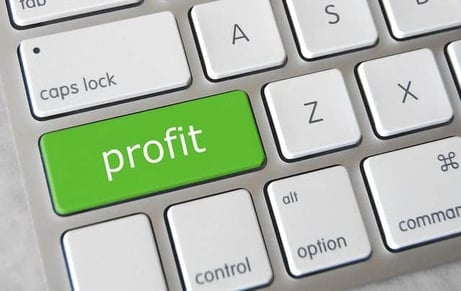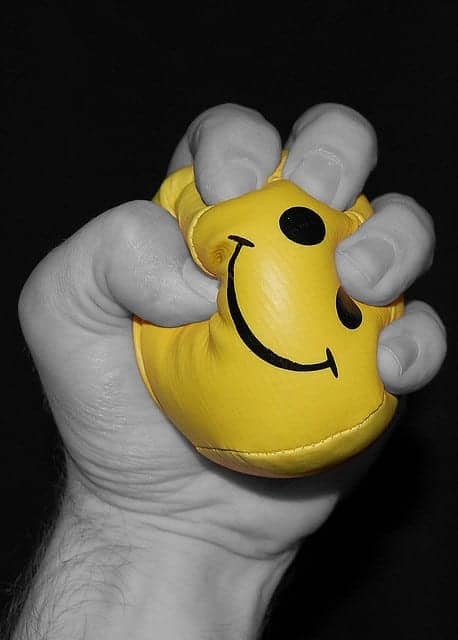As I say day trading without margin aloud, it is almost as if I am taking all the fun and excitement out of trading. I would compare it to riding a supercharged Harley with a helmet.
The trading business tends to reward and revere those of us that have thee ability to take on insurmountable risk trades and somehow pull out the big winner.
In this article, I will provide five reasons why day trading without margin is a feasible option for your trading activity.
Before we breakdown why day trading without margin could be a good idea for you, let us first explore how you can day trade without margin.
What are your options for day trading without margin?

Options for Day Trading without Margin
The rules are the rules. The SEC has stated in order to day trade you must have a minimum of $25,000 dollars in your account and your account must have a pattern day trader status.
So, what are your options if you do not have either of the aforementioned and want to day trade without margin?
Option 1 – Place Trades out of more than one account

Brokerage Firms
The SEC allows you to take four round trip trades per week, without the brokerage firm tagging your account as a pattern day trader and placing your account on hold.
In theory, you could have three accounts with a balance of $7,000 each, which would allow you to place 12 trades per week.
I do not know about you, but that sounds crazy and I believe the odds of maintaining all three accounts and somehow coming out on top every day is highly unlikely. It is simply too much to manage.
Option 2 – Only place 3 trades per week
This would actually work, however, I do not know how you could make a living or even a decent income using this approach. You could go all-in on each trade; however, this would increase your likelihood of having a boom-bust cycle.
You could use a third of your account per trade, but if you are under $25,000, you are looking at using approximately $6,000 to $8,000 per trade and after commissions; there just is not much to take home to the kids.
Option 3 – Open an account with a prop trading firm
For those that are unaware of prop firms, you fund an account with a firm and after completing a training course, you can begin trading with the firm’s money. Instead of needing the entire $25,000 upfront, you can use a smaller portion of funds for day trading (i.e. $5,000), as you are covered under the prop firms account.
While this, in theory, is possible, if you have less than $25,000, you have no business trading in a prop firm. I get you can use the prop firm to learn, but I have yet to meet a trader that can live off profits from an account balance of $25,000, especially when you need to split those profits with the firm.
Therefore, technically yes you can day trade without a margin account, but as you can see from the options listed, things are restrictive.
Day Trading with Cash

Cash
Let me float a crazy idea your way. What if you worked on building up the cash to qualify as a day trading account per the SEC’s standards; however, you only use the cash on hand in your account.
For example, let us say you have a $100,000 dollar account and instead of going for the full advantage of $400,000, you just trade the $100,000.
Odds are you read that last statement and probably said to yourself, “That’s pretty stupid. If I can use $400,000, then can’t I make more money?”
This opens up another can of worms, which is why the need to make more money so quickly. Couldn’t you use the time to your advantage and slow it up a bit?
To this point, let us explore the benefits of day trading with cash.
Let us cover the five reasons why it’s a great idea to day trade with cash
#1 – Consistent Profits

Profits
I tend to have the most consistent profits when I come off a bad losing streak. My determination to walk away with minimal losses leads to a nice up-sloping equity curve.
In addition, I also focus on limiting my use of leverage. Logically if I just finished blowing up my account, then I want to limit further losses.
Naturally, with a focus on limiting losses and only using cash, I inevitably go on a run.
Just like a great Hollywood script, as I gain control and things are going extremely well, I subconsciously find a way to sabotage my success. I would do this by loosening my rules and of course using more margin. This does not happen overnight but is a gradual deterioration over a number of trades as things continue to go my way.
Before I know it, I am using way more margin than I set out to; then things fall apart.
What if you just kept trading cash and keeping your eye on the ball? What if you just let the greed go and realize that you have many more years ahead in your trading career, so you do not need to make it all today?
It is like when I tell my kids to slow down when they are eating their hamburgers…it’s not going anywhere kids – relax.
#2 – Help Accelerate Your Growth as a Trader
Traders fall into three categories and if you are a fan of the Tradingsim blog, you know where I am going with this statement.
- Bleed Money – These traders cannot put on a winning streak for their life. No matter what they do, the market somehow comes out on top. This is generally newbie traders with no market experience but has a ton of optimism.
- Boom-Bust – this is where I spent a number of years. You know what to do and when to do it; however, you blow up your account that took you months to build in a matter of days. The good news if you are in this cycle, you are one or two tweaks away from making it to the Promised Land.
- Money Makers – this is the top 10% of traders that consistently make money, month-over-month.
So, how does day trading with cash play into these phases of a trading career? If you are in the first group, giving you extra money is like pouring kerosene on a burning building. You are no help to yourself, and now I am going to extend you cash to further hurt your efforts.
If you are trading on your own, the brokerage firm will not call you to see if you are properly trained or have the means to pay back a short position if it goes way against you. Not their problem.
So, should you really use margin? I think not.
For my second group of boom-bust traders, I am going to make the argument that margin is also a bad idea. Have you noticed that your bust trades come when you are generally over-leveraged?
How about this, cut back on the margin. Just trade cash for an extended period of time. Give yourself an opportunity to make it on your own.
Why use the extra money? If you have $50,000, to the person with $500,000 you are broke. To the person with $500,000, to another trader with $5,000,000 you are peanuts.
When does it end?
To the top 10% of traders, you continue to do what you do, day trading with or without margin. The bottom line is you are consistently making money.
Just to reiterate this point, you are going to go through three phases in your trading career. Without even knowing it, margin can impede your ability to progress through each phase.
# 3 – Less Stress

Less Stress
When you trade with margin and the market goes against you, it is one of the most stressful situations you can encounter.
Let me walk you through an example. Let us say you are long on a biotech stock that has a 70% cash requirement. Not only are you in your favorite biotech, but you are also in two other positions, which are also going against you.
At this point, do you think you will be able to make clear decisions? Will you be able to honor your stop-loss orders or will you panic just to avoid a margin call or mounting losses?
The lower your stress levels the better you will trade.
# 4 – Margin Rates
Brokerage firms do not give out money for free. For their risk exposure, the brokerage firms charge interest for the use of their cash. This is why brokerage firms offer you money. It is not that they like you or they hope you make tons of cash; it is just another revenue stream for their business.
Investor Junkie has a great article that displays the average margin interest rate based on the account value. This can range from 9.00% on the high end down to 1.5% interest on the low end.
Therefore, once margin is applied to millions of dollars across thousands of accounts, it is simply a no brainer for the brokerage firm.
Nevertheless, why place yourself in a position where you are paying interest and are liable for any losses? Debt is the same thing as bondage, whether it is a credit card or margin.
#5 – The Facts
To this point, I have been speaking to you from my experience. However, if you are like me, you are probably thinking, “Well that’s your opinion, I am the master of my own destiny.”
I get it. Well, let me give you some cold hard facts to back up my personal claims.
There was an article published by the Wall Street Journal in 2012, titled ‘The Customer is Too Often Wrong at FXCM’, which explained how over 70% of retail accounts were unprofitable for four consecutive quarters.
The article goes on to explain that the main driver for this lack of profitability is the fact FXCM offers its clients a 50 to 1 leverage ratio on a $10,000 account.
Now, this example is specific to the Forex market and is a few years old; however, the same rules apply. When you have inexperienced traders day trading with access to margin, bad things can happen.
In Summary
I know I have bashed the use of margin throughout this article, but the key item to take away is that the use of margin is a privilege. Focus on making great trades and limit your use of margin to increase your odds of winning at this the greatest game.
Let’s Improve Your Trading Performance
Tradingsim accelerates the steep learning curve of becoming a consistently profitable trader by allowing you to replay the market as if you were trading live today, for any day from the last 2 years – it’s really a trading time machine.
To see how Tradingsim can help improve your bottom-line numbers, please visit our homepage.
Photos
Choices – Dan Moyle
Profits – Got Credit
Less Stress – Bottled Void
Cash – Tax Credit












 Day Trading Indicators
Day Trading Indicators 
